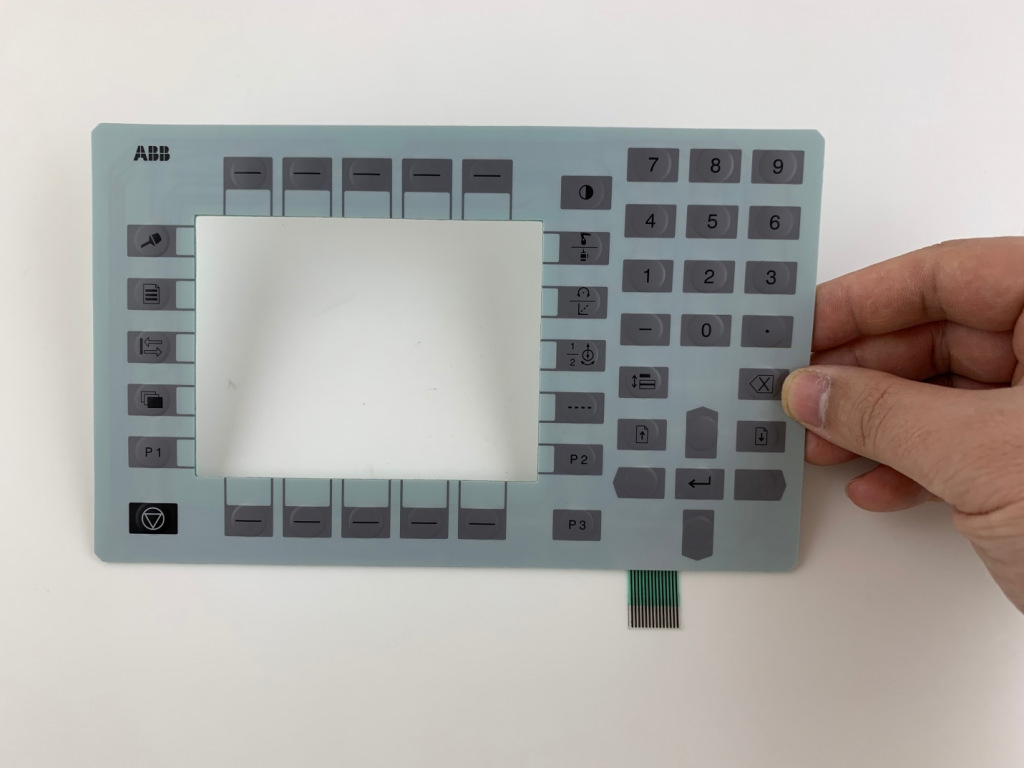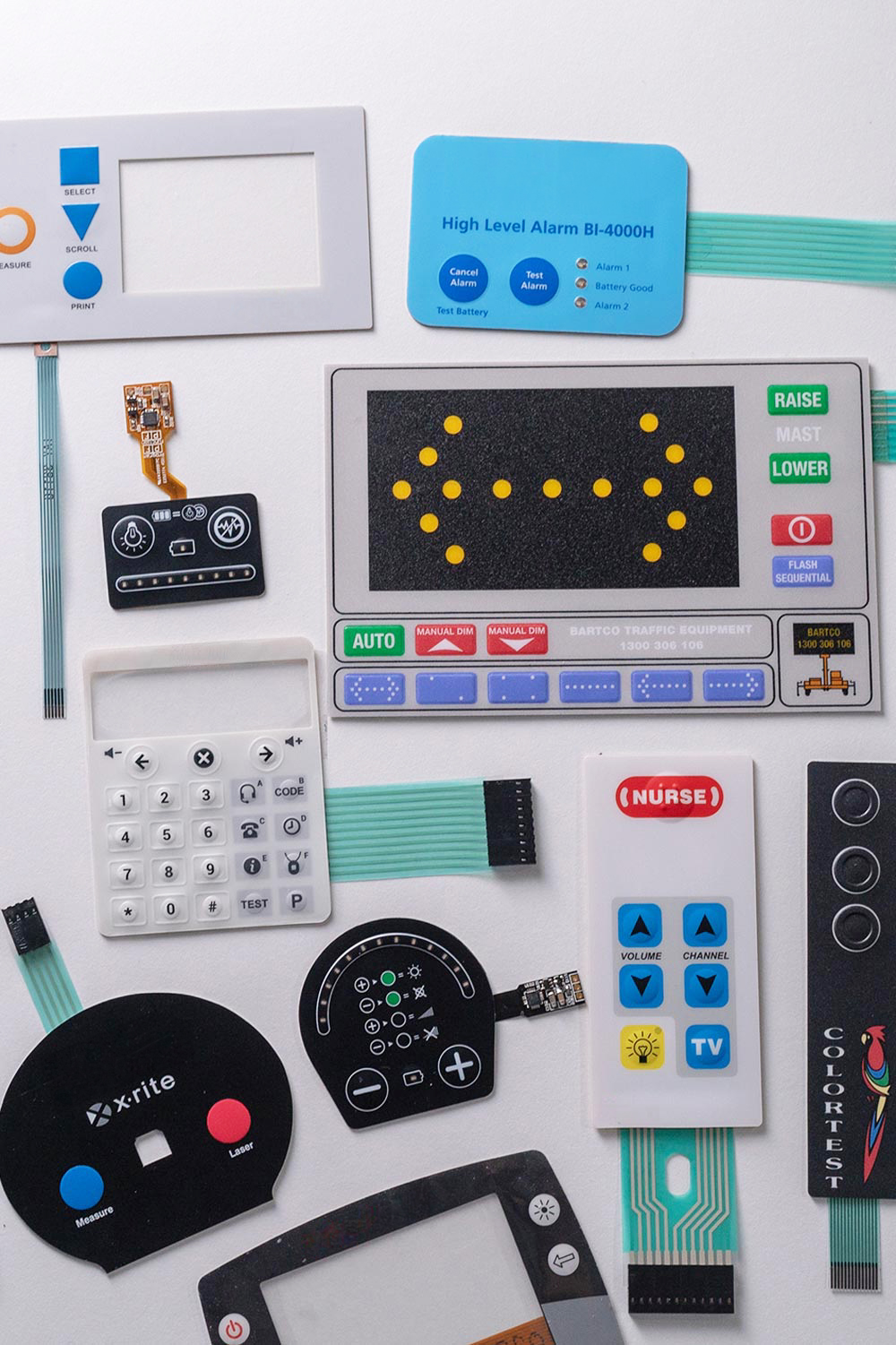A Comprehensive Guide to Membrane Switch Design and Manufacturing
A Comprehensive Guide to Membrane Switch Design and Manufacturing
Blog Article
Understanding Membrane Layer Switches Over: The Key to Long Lasting and Trustworthy Controls
Membrane layer changes stand for an important facet of contemporary interface design, blending capability with strength in various applications. As we explore the intricacies of membrane switches, it ends up being clear that their role in enhancing control systems is both intricate and extensive, raising inquiries about just how finest to leverage their capabilities in future developments.
What Are Membrane Buttons?
Membrane switches are an innovative remedy in the world of user interface innovation, incorporating functionality and layout perfectly. These devices function as a user interface between users and digital systems, incorporating several components right into a small layout. Typically built from flexible, thin layers of products, membrane buttons are designed to react to touch, enabling users to communicate with machinery and digital devices effectively.
The main elements of a membrane layer switch include a published circuit layer, graphic overlay, and a spacer layer that prevents unintended activation. The graphic overlay can be customized to mirror brand identity or customer choices, enhancing looks while making sure usability. Membrane layer switches are frequently made use of in numerous applications, consisting of medical gadgets, customer electronic devices, and commercial devices, owing to their sturdiness and resistance to ecological variables such as moisture and dust.
Among the key advantages of membrane buttons is their capability to withstand deterioration, making them ideal for high-traffic environments. Additionally, they are light-weight and need minimal space, enabling ingenious styles in item development. Overall, membrane switches over represent a functional and efficient choice for modern-day electronic interfaces, marrying modern technology with user-centric design principles.

Just How Membrane Layer Switches Over Work
The operation of membrane layer changes depend upon an easy yet efficient system that converts individual input right into digital signals. These switches are composed of numerous layers, commonly including a graphic overlay, a spacer layer, and a circuit layer. When a user presses the button, the top layer warps, enabling a conductive aspect in the circuit layer to make call with a matching conductive pad on the bottom of the visuals overlay. This call closes the circuit and sends out a digital signal to the device, showing that the button has been turned on.
The design of membrane buttons can differ, but they frequently include domes or tactile components to supply feedback to the individual, enhancing the general experience. The materials used in membrane switches, such as polyester or polycarbonate, add to their durability and resistance to ecological variables, including dampness and dust. Additionally, the printed circuits are commonly encapsulated, which shields them from damage in time.

Advantages of Membrane Buttons
Among the key advantages of membrane switches is their versatility in design, enabling them to be customized to fulfill details individual needs and visual demands. This versatility reaches various industries, where different forms, dimensions, and colors can be utilized to improve individual interaction and aesthetic allure.
Additionally, membrane buttons are recognized for their longevity. Built from robust products, they are resistant to dust, wetness, and physical wear, which considerably extends their lifespan compared to typical mechanical switches. This sturdiness makes them particularly suitable for high-traffic settings and applications needing durability.

Furthermore, membrane switches offer a structured profile, causing a thinner layout that can be incorporated into various devices without adding mass. This function not just boosts the aesthetic allure yet likewise adds to a more ergonomic product style.

Applications of Membrane Buttons
Straightforward and functional, membrane layer switches discover applications throughout a large range of markets, consisting of clinical devices, consumer electronics, and industrial tools. In the clinical field, these buttons are important to devices such as diagnostic equipment, patient monitoring systems, and mixture pumps, where reliability and ease of cleansing are crucial. Their capability to maintain and stand up to severe settings functionality makes them ideal for such applications.
In customer electronics, membrane layer buttons are utilized in site web products like microwaves, washing machines, and remote controls - membrane switch. Their streamlined design enables instinctive interface, enhancing the overall customer experience while giving longevity and resistance to deterioration
Industrial devices likewise takes advantage of membrane layer buttons, specifically in control panels for machinery and automation systems. These switches provide security versus dirt and moisture, guaranteeing constant performance in tough environments. Additionally, their adjustable attributes allow suppliers to tailor them to details operational needs, boosting effectiveness and capability.
Selecting the Right Membrane Layer Switch
When selecting a membrane layer switch, it is vital to take into consideration different aspects that influence efficiency and suitability for specific applications. The key considerations consist of ecological conditions, responsive responses, durability, and layout specs.
First, assess the operating atmosphere; buttons subjected to wetness, chemicals, or severe temperatures call for specific products to make sure durability and functionality. Next off, review the need for responsive feedback. Relying on customer communication, some applications might take advantage of a responsive reaction to validate activation, while others might choose a non-tactile design for aesthetic factors.
Longevity is an additional important factor; membrane switches must be made to hold up against constant usage, effects, and abrasion. Ensure the chosen switch can sustain the expected lifecycle, particularly in high-usage scenarios.
Verdict
Finally, membrane switches work as necessary components in the design of dependable and sturdy control systems across different sectors. Their small layout, incorporated with robust building and construction and adjustable attributes, improves customer interaction while guaranteeing longevity sought after environments. The adaptability of membrane switches over permits customized solutions that fulfill certain operational requirements, enhancing their significance in modern innovation. membrane switch. As industries remain to evolve, the value of integrating efficient membrane switch solutions can not be overstated.
Membrane switches represent a vital facet of contemporary user interface style, blending capability with durability in numerous applications.Membrane switches are an innovative service in the world of individual interface modern technology, integrating functionality and layout effortlessly. Generally created from adaptable, slim layers of products, membrane layer buttons are designed to respond to touch, making it possible for individuals to connect with equipment and electronic tools effectively.
The style of membrane layer buttons can differ, yet they typically incorporate domes or responsive components to give feedback to the individual, improving the total experience.In conclusion, membrane layer i loved this changes serve click for info as necessary components in the style of reliable and durable control systems throughout numerous industries.
Report this page